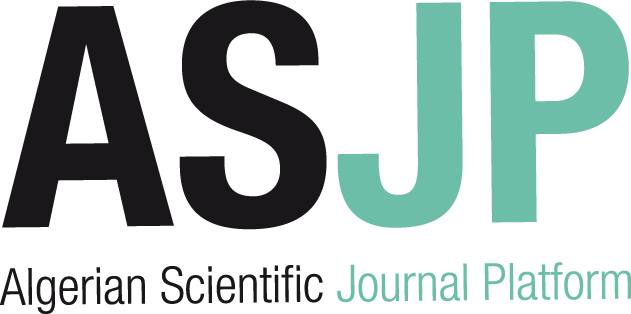[article]
| Titre : |
The trace metal chemistry of deep geothermal water, palinpinon geothermal field, negros island, Philippines : implications for precious metal deposition in epithermal gold deposits |
| Type de document : |
texte imprimé |
| Auteurs : |
Andrew J. Rae, Auteur ; David R. Cooke, Auteur ; Kevin L. Brown, Auteur |
| Année de publication : |
2011 |
| Article en page(s) : |
pp. 1425-1446 |
| Note générale : |
Economic geology |
| Langues : |
Anglais (eng) |
| Mots-clés : |
Metal chemistry Geothermal water Epithermal gold deposits Philippines |
| Index. décimale : |
553 Géologie économique. Minérographie. Minéraux. Formation et gisements de minerais |
| Résumé : |
Palinpinon geothermal field, Negros Island, Philippines, is a high-temperature, liquid-dominated geothermal system in an active volcanic island-arc setting. Parallels have been drawn between the geologic setting and hydrothermal alteration styles recognized at Palinpinon with those that characterize several types of magmatic-hydrothermal ore deposits (e.g., porphyry, skarn, and high and intermediate sulfidation epithermal systems).
The neutral chloride Palinpinon reservoir water chemistry is affected by boiling, mixing, and conductive cooling. The occurrence of base and precious metal scale deposits in several geothermal wells demonstrates that the deep reservoir fluid is capable of transporting and depositing base and precious metals. However, trace metal analysis of the deep reservoir fluids shows they are undersaturated with respect to gold (1–4 μg/kg). Chemical modeling of Palinpinon geothermal water predicts that boiling should be the most effective mechanism for base and precious metal deposition, producing sulfide assemblages similar to those present in well scale deposits. Mixing with acid-bearing sulfate waters can also produce these sulfide assemblages, but less efficiently and with gold and silver deposition occurring at lower temperatures (i.e.,
Despite indications that modern hydrothermal fluids are capable of metal transportation, base and precious metal deposition is not strongly developed at Palinpinon. Base and precious metal concentrations in drill core and drill cuttings are one to two orders of magnitude below ore grade ( |
| DEWEY : |
553 |
| ISSN : |
0361-0128 |
| En ligne : |
http://econgeol.geoscienceworld.org/content/106/8/1425.abstract |
in Economic geology > Vol. 106 N° 8 (Décembre 2011) . - pp. 1425-1446
[article] The trace metal chemistry of deep geothermal water, palinpinon geothermal field, negros island, Philippines : implications for precious metal deposition in epithermal gold deposits [texte imprimé] / Andrew J. Rae, Auteur ; David R. Cooke, Auteur ; Kevin L. Brown, Auteur . - 2011 . - pp. 1425-1446. Economic geology Langues : Anglais ( eng) in Economic geology > Vol. 106 N° 8 (Décembre 2011) . - pp. 1425-1446
| Mots-clés : |
Metal chemistry Geothermal water Epithermal gold deposits Philippines |
| Index. décimale : |
553 Géologie économique. Minérographie. Minéraux. Formation et gisements de minerais |
| Résumé : |
Palinpinon geothermal field, Negros Island, Philippines, is a high-temperature, liquid-dominated geothermal system in an active volcanic island-arc setting. Parallels have been drawn between the geologic setting and hydrothermal alteration styles recognized at Palinpinon with those that characterize several types of magmatic-hydrothermal ore deposits (e.g., porphyry, skarn, and high and intermediate sulfidation epithermal systems).
The neutral chloride Palinpinon reservoir water chemistry is affected by boiling, mixing, and conductive cooling. The occurrence of base and precious metal scale deposits in several geothermal wells demonstrates that the deep reservoir fluid is capable of transporting and depositing base and precious metals. However, trace metal analysis of the deep reservoir fluids shows they are undersaturated with respect to gold (1–4 μg/kg). Chemical modeling of Palinpinon geothermal water predicts that boiling should be the most effective mechanism for base and precious metal deposition, producing sulfide assemblages similar to those present in well scale deposits. Mixing with acid-bearing sulfate waters can also produce these sulfide assemblages, but less efficiently and with gold and silver deposition occurring at lower temperatures (i.e.,
Despite indications that modern hydrothermal fluids are capable of metal transportation, base and precious metal deposition is not strongly developed at Palinpinon. Base and precious metal concentrations in drill core and drill cuttings are one to two orders of magnitude below ore grade ( |
| DEWEY : |
553 |
| ISSN : |
0361-0128 |
| En ligne : |
http://econgeol.geoscienceworld.org/content/106/8/1425.abstract |
|


 Ajouter le résultat dans votre panier Faire une suggestion Affiner la recherche
Ajouter le résultat dans votre panier Faire une suggestion Affiner la rechercheThe trace metal chemistry of deep geothermal water, palinpinon geothermal field, negros island, Philippines / Andrew J. Rae in Economic geology, Vol. 106 N° 8 (Décembre 2011)











